Shoestring's blog
Federal Aviation Administration Failures on 9/11: Why Did Those Responsible for Responding to the Hijackings Get It So Wrong?
 The actions of personnel at the headquarters of the Federal Aviation Administration (FAA) on September 11, 2001, were marked by failures that likely hindered the U.S. government's response to the hijackings that day and may consequently have increased the chances that the terrorist attacks on the World Trade Center and the Pentagon would succeed.
The actions of personnel at the headquarters of the Federal Aviation Administration (FAA) on September 11, 2001, were marked by failures that likely hindered the U.S. government's response to the hijackings that day and may consequently have increased the chances that the terrorist attacks on the World Trade Center and the Pentagon would succeed.
Well-established procedures were meant to be followed in the event of a hijacking in American airspace. FAA headquarters was required to promptly call the National Military Command Center (NMCC) at the Pentagon about the incident and, if necessary, request fighter jets to follow the hijacked aircraft.
New 9/11 Timeline Entries: Richard Myers's Actions During the Attacks, Pre-9/11 Warnings About Al-Qaeda, and More
From the History Commons Groups blog:
A large number of entries have been added to the Complete 9/11 Timeline at History Commons. The majority of these deal with events that took place on September 11, 2001, with a particular focus on the actions of General Richard B. Myers, the highest-ranking military officer in the United States when the terrorist attacks occurred; others describe notable incidents that occurred before 9/11, such as warnings issued by key individuals about the threat posed by al-Qaeda and discussions within government agencies about killing Osama bin Laden.
Vice Chairman of the Joint Chiefs of Staff Myers Learned of the Attacks on the World Trade Center
Many new timeline entries provide details of the response of Myers to the 9/11 attacks. Myers was at the time vice chairman of the Joint Chiefs of Staff. However, General Henry Shelton, chairman of the Joint Chiefs of Staff, was out of the country for most of the day of September 11 and so Myers stood in for him as acting chairman of the Joint Chiefs of Staff.
Time-Waster in Chief: General Richard Myers, the Highest-Ranking Military Officer in the U.S. During the 9/11 Attacks
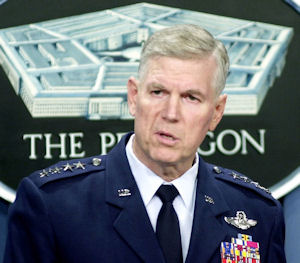
General Richard Myers was the highest-ranking military officer in the country when America came under terrorist attack on September 11, 2001, and yet he appears to have done nothing that would have helped protect the nation while the attacks took place.
Myers was, in September 2001, vice chairman of the Joint Chiefs of Staff--the second-highest-ranking officer in the U.S. military. However, when the 9/11 attacks occurred, General Henry Shelton, chairman of the Joint Chiefs of Staff, was out of the country and so Myers was the acting chairman of the Joint Chiefs of Staff and took on the chairman's responsibilities until Shelton returned to the United States late in the afternoon of September 11.
New 9/11 Timeline Entries: Hijackers Arrive at Dulles Airport, FBI Behaves Suspiciously, Cheney Gives Shootdown Order, and More
From the History Commons Groups blog:
A large number of entries have been added to the Complete 9/11 Timeline at History Commons, many of them providing important details about the events of September 11, 2001, and others describing notable incidents that took place before and after 9/11.
Hijackers Were Recorded on Video at Dulles Airport
The majority of the new entries describe events that took place on September 11. A number of them describe the arrival of the five alleged hijackers of Flight 77 at Washington's Dulles International Airport.
Khalid Almihdhar and Majed Moqed were the first of the hijackers to check in at the American Airlines ticket counter at the airport. Minutes later, the two men entered the airport's west security checkpoint and, despite setting off alarms when they walked through the metal detectors, were cleared to proceed on their way.
The Strange Story of Daniel Lewin, the First Victim of the 9/11 Attacks
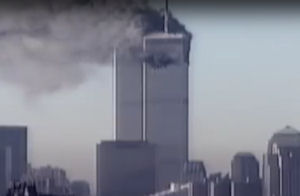
Daniel Lewin is believed to have been the first person killed in the terrorist attacks in the United States on September 11, 2001. The 31-year-old from Brookline, Massachusetts, was a passenger on American Airlines Flight 11, the first plane to be hijacked that day. He was reportedly murdered by Satam al Suqami, one of the alleged hijackers, while the terrorists were taking over his plane.
Even before September 11, though, Lewin had secured his place in history. He was unusually intelligent and talented, and had excelled as a soldier, a student, and a businessman. Examination of his story, however, reveals many anomalies, contradictions, and odd coincidences that deserve scrutiny.
The Apathy and Inaction of Vice President Dick Cheney During the 9/11 Attacks

Dick Cheney, as vice president of the United States, had an important role to play when America came under terrorist attack on September 11, 2001, and yet he appears to have taken no significant action until the attacks were over. He did nothing to initiate or implement a government response to the crisis until it was too late for his actions to make a difference to the outcome of the attacks.
Cheney, who was at the White House on the morning of September 11, was alerted to the first crash at the World Trade Center shortly after 8:46 a.m., when it occurred. He followed the coverage of the incident on television and saw the second hijacked plane crashing into the Trade Center at 9:03 a.m.
New 9/11 Timeline Entries: Government Agencies' Initial Responses to the Attacks, John O'Neill's Warnings, and More
From the History Commons Groups blog:
A large number of new entries have been added to the Complete 9/11 Timeline at History Commons, covering a wide range of events relating to the 9/11 attacks. Entries cover, among other things, various warning signs of what was going to happen on September 11, 2001; the actions of John O'Neill, the FBI's top al-Qaeda expert; and new details of what happened on the day of 9/11.
CIA Was Initially Unsure Which Group Was Likely Behind the Attacks
Many entries describe events that occurred on September 11, 2001. Some of them describe the initial reactions and responses of government and military agencies to the attacks on the World Trade Center.
Why Did the Secret Service Report That a Plane Had Crashed into the White House on 9/11?
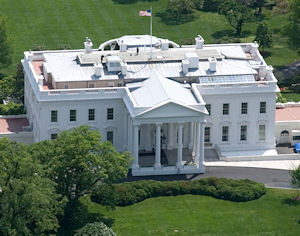 Firefighters were called out to a major incident that supposedly occurred at the White House, minutes after the Pentagon was attacked on September 11, 2001. The Secret Service had reported that a plane had crashed into the home of the U.S. president, the building was on fire, and there had been a structural collapse. However, when members of the District of Columbia Fire Department arrived on the scene, it quickly became apparent to them that no such incident had taken place and they were promptly ordered to leave.
Firefighters were called out to a major incident that supposedly occurred at the White House, minutes after the Pentagon was attacked on September 11, 2001. The Secret Service had reported that a plane had crashed into the home of the U.S. president, the building was on fire, and there had been a structural collapse. However, when members of the District of Columbia Fire Department arrived on the scene, it quickly became apparent to them that no such incident had taken place and they were promptly ordered to leave.
While it might be claimed that this incident was merely the result of confusion in the middle of an unprecedented crisis, there is an alternative explanation for it. Evidence suggests the Secret Service could have been running a training exercise on the morning of September 11, which included the scenario of a plane crashing into the White House.
New 9/11 Timeline Entries: Office of Emergency Management on 9/11, FBI's Response to the Attacks, Events at the Pentagon & More
From the History Commons Groups blog:
New entries have been added to the Complete 9/11 Timeline at History Commons, which describe many incidents relating to the 9/11 attacks, including new details of what happened on September 11, 2001, and some notable pre-9/11 events.
Fire Alarm System in WTC 7 Was on 'Test Condition'
Several new timeline entries describe incidents that occurred on September 11 in World Trade Center Building 7, a 47-story skyscraper located north of the Twin Towers that collapsed at 5:20 p.m. that day. At 8:46 a.m., when the first hijacked plane crashed into the North Tower, the electrical power in WTC 7 briefly went off for reasons that are unclear. Similarly, at 9:03 a.m., when the second hijacked plane hit the South Tower, "primary power" was lost and alarms warned that there was no water pressure in the building.
Security Alerts, Disabled Fire Alarms, and Unused Elevators: Suspicious Events at the World Trade Center Before 9/11
 At least three notable anomalous events occurred at the World Trade Center in the weeks and months leading up to September 11, 2001, which may have related to the imminent terrorist attacks but could not have been caused by al-Qaeda, the group supposedly responsible for 9/11.
At least three notable anomalous events occurred at the World Trade Center in the weeks and months leading up to September 11, 2001, which may have related to the imminent terrorist attacks but could not have been caused by al-Qaeda, the group supposedly responsible for 9/11.
There was an increase in security at the Trade Center in the two weeks before 9/11, for reasons that are unclear, which only ended the day before the attacks. Also, the fire alarm system in World Trade Center Building 7 was placed on "test condition" every morning in the seven days before the attacks and on the day of 9/11. While it was in this mode, any alarms would be ignored. WTC 7 was a massive skyscraper located just north of the Twin Towers, which mysteriously collapsed late in the afternoon of September 11. And some of the elevators in the Twin Towers were out of service in the months before the attacks, supposedly due to maintenance work or modernization.
New 9/11 Timeline Entries: White House on September 11, Actions of Pentagon Officials, Flight 93 Passengers' Revolt, and More
From the History Commons Groups blog:
A large number of entries have been added to the Complete 9/11 Timeline at History Commons, the majority of which provide new details about the events of September 11, 2001.
WHITE HOUSE STAFFERS WERE PREPARING FOR THE CONGRESSIONAL PICNIC
The Indifference and Inaction of Deputy Defense Secretary Paul Wolfowitz During the 9/11 Attacks
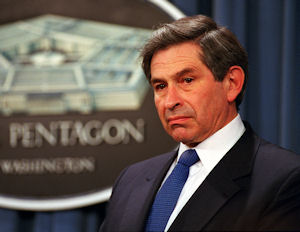
Deputy Secretary of Defense Paul Wolfowitz had a crucial role to play in the military's response to the terrorist attacks on September 11, 2001, and yet he did nothing to help protect his country until the attacks were over and it was too late for him to make a difference to the outcome of the crisis.
As the second-highest-ranking official in the Department of Defense, Wolfowitz surely had critical duties to perform and should have promptly taken action when America came under attack. Furthermore, since he was at the Pentagon when the attacks occurred, he was in a good location to help the military respond to them. And yet he appears to have reacted to the catastrophic events with indifference.
Why Did the Top Army Officer in the U.S. Do So Little in Response to the 9/11 Attacks?

General John M. "Jack" Keane was the most senior Army officer in the United States on September 11, 2001. Working at the Pentagon, he was ideally placed to respond promptly and effectively to the terrorist attacks that day. And yet he appears to have done alarmingly little while the attacks were underway.
The only action he has recalled taking after learning about the crashes at the World Trade Center was ordering that the Army Operations Center (AOC) at the Pentagon be brought up to full manning. He apparently did not order the activation of the Army's Crisis Action Team (CAT), even though this was designed for dealing with emergencies like the one taking place at the time.
New 9/11 Timeline Entries: President Bush's Actions on September 11 and More
From the History Commons Groups blog:
A large number of entries have been added to the Complete 9/11 Timeline at History Commons, most of which provide important details about the actions of President George W. Bush and his entourage on September 11, 2001.
President Bush Visited a School in Florida
President Bush received his daily intelligence briefing early in the morning of September 11, but the briefing included nothing about terrorism. A short time later, numerous members of his staff learned that a plane had crashed into the World Trade Center as his motorcade headed to the Emma E. Booker Elementary School in Sarasota, Florida, and yet no one told him what had happened at that time.
Secretary of Defense Donald Rumsfeld 'Deserted His Post' While America Was Under Attack on 9/11
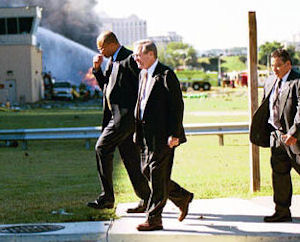 Donald Rumsfeld, the U.S. secretary of defense, proceeded as normal with his daily intelligence briefing at the Pentagon on the morning of September 11, 2001, despite learning that a second aircraft had hit the World Trade Center and America was clearly under attack. Even when the Pentagon was attacked, over 30 minutes later, he still did nothing to assist the military's response to the crisis and instead hurried outside to the crash site, simply to inspect the damage and help carry a stretcher. By the time that he became involved in defending his country, the terrorist attacks were over.
Donald Rumsfeld, the U.S. secretary of defense, proceeded as normal with his daily intelligence briefing at the Pentagon on the morning of September 11, 2001, despite learning that a second aircraft had hit the World Trade Center and America was clearly under attack. Even when the Pentagon was attacked, over 30 minutes later, he still did nothing to assist the military's response to the crisis and instead hurried outside to the crash site, simply to inspect the damage and help carry a stretcher. By the time that he became involved in defending his country, the terrorist attacks were over.
Rumsfeld, as secretary of defense, had important responsibilities that day. And yet he repeatedly ignored the appeals of colleagues when they tried to get him involved with the military's response to the attacks. Remarkably, he rejected the advice of two aides to abandon his usual activities because, he told them, if he did so, "the terrorists have won."